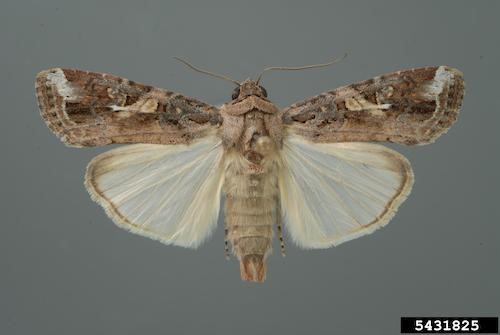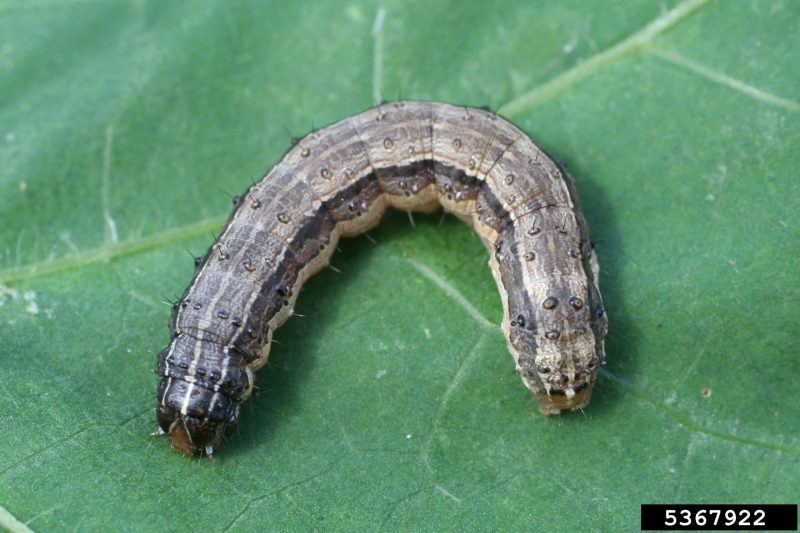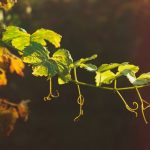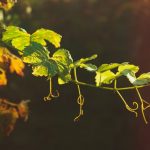Image: A larva of the fall armyworm. Image courtesy of Russ Ottens, University of Georgia, Bugwood.org
Recent detections of fall armyworm in New South Wales and its continuing spread southwards at pace have prompted the issuing of this Biosecurity Alert to raise the wine industry’s awareness of this pest.
Fall armyworm is an exotic plant pest, native to tropical and subtropical regions of the Americas. It’s a voracious feeder which reproduces rapidly. The moth stage is highly mobile and can fly up to 100 kilometres per night.
Since 2016, fall armyworm has spread to and throughout Africa, the Indian subcontinent, China and South East Asia. It was first found in Australia earlier this year and has spread into Northern Australia in Queensland, Western Australia and Northern Territory and recently into New South Wales.
For each of the 65 countries it has entered, eradication has been unsuccessful.
Northern Australia’s conditions are particularly favourable for this pest to establish and spread (with survival year-round), including climate and access to suitable hosts. Populations are unlikely to establish in areas where temperatures fall below 9-12⁰C and where frosts occur. However, seasonal migration may still occur into such areas. Global warming is also likely to expand the range of suitable conditions for establishment for this pest.
Potential impact on grapevines
There is very limited overseas published information on the development, feeding behaviour and damage to grapevines. As a result, the potential impact on Australia’s vineyards is not known to date.
While grapevines are not recognised as a primary host for fall armyworm, as with many insects, there is potential for feeding when preferred hosts are scarce.
The Australian Wine Research Institute (AWRI) advises that the APVMA currently has a broad range of chemical classes listed under permit for use on grapevines against fall armyworm. This pest does, however, have a reputation for developing resistance to insecticides and therefore chemical control is only recommended as a last resort and within the context of an integrated pest management strategy. The use of ‘softer’ chemical options where sprays are considered necessary, is therefore suggested.
What you need to do
Members of the wine industry, especially in favoured climatic zones and in New South Wales, should be aware of what you’re looking for and include monitoring for fall armyworm into your routine pest and disease monitoring.
Fall armyworm is a notifiable plant pest. You are obligated to report any sightings resembling fall armyworm to the Exotic Plant Pest Hotline on 1800 084 881.
Abide by industry notifications relevant to winegrapes for treatments using registered pesticides as required. Contact the AWRI directly on (08) 8313 6600 for further advice on agrochemicals.
For localised advice, keep informed through your state government biosecurity department’s website and subscribe to receive their biosecurity newsletters.
Impact
According to observations on other crops, in the absence of management, yield losses will depend on multiple factors including pest population levels, timing of infestation, presence of natural enemies and the health and vigour of the host plant.
The larval stage of the fall armyworm is that which causes significant feeding damage. Larvae are most active during late summer and early autumn and can eat leaves, shoots, stems and fruit of different ages.
Larvae are known to feed on more than 350 types of plants, grasses and other crops, including cotton, maize, sugarcane, sorghum, wheat, rice and many fruit and vegetables including melon, sweetcorn and sweet potato.
Crops such as maize and rice have been destroyed almost overnight in places without control measures when population levels are high.
Evidence of the pest could include egg masses, plant leaf damage or fruit or vegetable damage.
There are species of Spodoptera already present in Australia which can look similar to fall armyworm. Some are pests, such as lawn armyworm and dayfeeding armyworm.
About the pest

The fall armyworm life cycle has an egg stage, 5-6 caterpillar (larval) stages, a pupal stage and an adult moth stage.
The pale yellow fall armyworm eggs are usually laid at night on the under surface of leaves in clustered masses of 100-200, covered with a ‘felt like’ layer of scales. The eggs hatch within 2-4 days after being laid. See Figure 1.
The larvae are light green to brown with dark heads, becoming browner as they grow. Older larvae develop to 3-4cm and have white stripes along the length of the body, a pale inverted ‘Y’ shape between the eyes, and two dark spots with dark spines on each body segment on the upper body surface, with 4 black spots arranged in a square on the last abdominal segment. See Figure 2.
Fall armyworm larvae normally pupate in the soil. The pupae are shiny brown and between 1.3 and 1.7 cm long and 0.5cm wide.
Adult moths have a 3.2 to 4.0cm wingspan, with a brown or grey forewing, and a white hindwing. Males have more patterns and a white spot on each forewing. Female moths are slightly larger than males, although both sexes have a white hindwing with a dark-brown margin. Male moths are more patterned and have distinct triangular white spots at the tip and near the centre of each forewing. See Figure 3.
Timeline of detection in Australia/Australian waters
Fall armyworm was first found in Australia in January 2020 on the Torres Strait islands of Saibai and Erub. It spread quickly to other parts of Queensland including Bamaga, Croydon, South Johnstone, Tolga, Lakeland, Mareeba, the Burdekin, Bowen, Bundaberg, Emerald, Richmond, Clemont, Biloela, Mackay, Longreach, Lockyer Valley, St George and Chinchilla. In March the pest was detected in the Northern Territory at Katherine, Douglas Daly and East Point, and in northern Western Australia at Kununurra. In April, fall armyworm was detected in Broome and Carnarvon in Western Australia. In September/October the pest was detected in New South Wales north of Moree, then subsequently east of Narrabri and west of Wee Waa.
Australia’s response
In May 2020, the National Management Group agreed with the Consultative Committee on Emergency Plant Pests that fall armyworm is not technically feasible to eradicate.
This is due to the pest’s reproductive capacity, ability to fly long distances, wide host range, spread of known infestations, and potential for re-infestation from Australia’s northern neighbours.
State and territory governments are working closely with industry groups and communities to monitor this pest, raise awareness and prepare industries for the likely ongoing management of the pest. A series of six podcasts of 30 minutes each have been developed through the Plant Biosecurity Research Initiative to deliver the latest knowledge on the monitoring for and management of fall armyworm across our northern farming systems https://www.pbri.com.au/pbri-podcasts/.
Surveillance including placement and monitoring of early warning pheromone traps, will continue in major agricultural areas across Queensland, Northern Territory, Western Australia and New South Wales, to monitor for the pest. This will help to provide updated advice to industry about fall armyworm presence.
Are you a Daily Wine News subscriber? If not, click here to join our mailing list. It’s free!





















